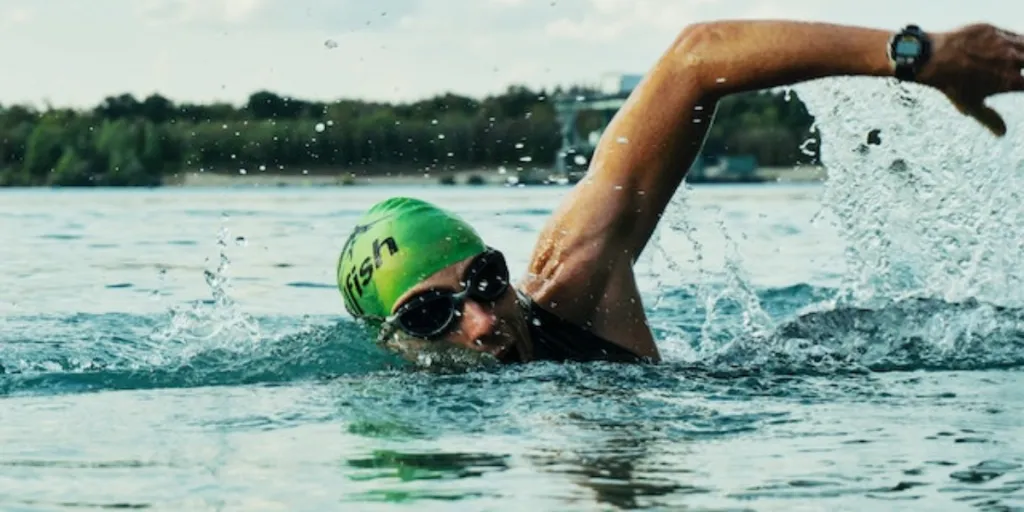Swimming has become a highly popular sport globally, captivating both athletes and enthusiasts alike. Depending on how seriously they take the sport, swimmers can rely on a wide range of training equipment to unlock their full potential. From drag suits designed to reduce resistance in the water to training aids like kickboards and pull buoys that target specific muscle groups, each piece of equipment plays a vital role in enhancing performance and refining technique.
But with so many options available, it can be overwhelming for swimmers to choose the right tools for training. That’s why we’ll explore the top 10 pieces of swimming training equipment that every swimmer should consider if they want to boost their performance. Continue reading to understand the world of swimming gear.
Table of Contents
Swim goggles
Swim fins
Hand paddles
Kickboards
Pull buoys
Snorkels
Resistance bands and parachutes
Drag suits
Tempo trainers
Swim lap counters
Conclusion
Swim goggles
Swim goggles are essential to ensuring clear vision underwater and prevent accidents. There are different types of goggles for different swimming scenarios: training goggles for regular use, racing goggles for competitive swimmers, and open-water goggles for adventurous swimmers.
Google Ads data reveals that search interest in “swim goggles” surged from 12,100 to 18,100 between June and July 2023, highlighting an increased interest by swimmers during the summer training period.

It’s important to source goggles with adjustable straps and cushioned seals, lenses that are suitable for the swimming environment (clear for indoor swimming and tinted/mirrored for bright outdoor conditions), and comfort with soft, hypoallergenic materials and anti-fog coatings.
Swim fins
Swim fins help swimmers enhance their leg strength and flexibility. They provide resistance in the water, challenging the leg muscles to develop power and endurance. There are two main types of fins to consider: short and long.
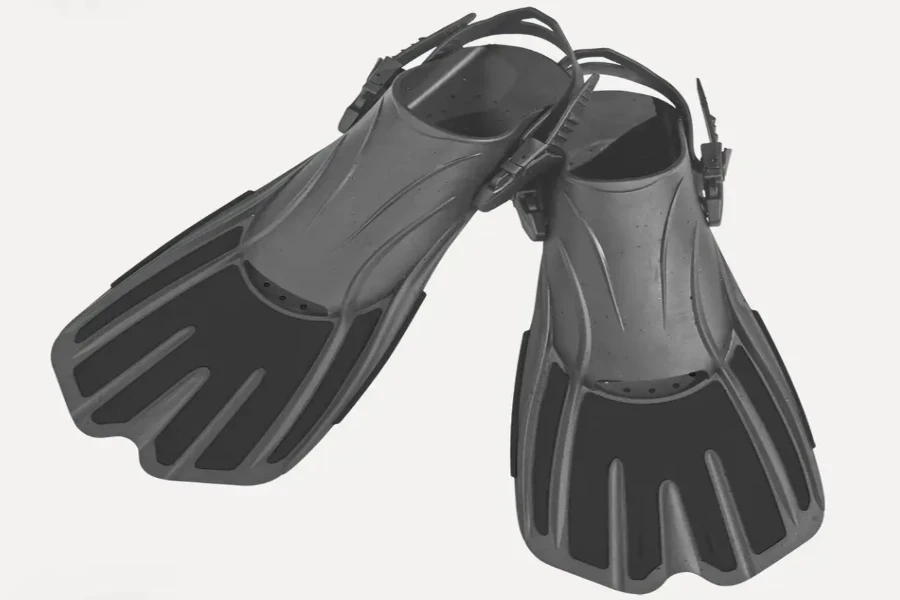
Short fins offer more control and are great for refining technique and building leg strength. Meanwhile, long fins provide increased propulsion and are ideal for building endurance and working on overall stroke efficiency.
In addition to improving leg strength and flexibility, swim fins can be used for a variety of drills and stroke improvement exercises. They can aid in developing a strong and efficient kick, helping swimmers improve their speed and propulsion in the water.
Hand paddles
Hand paddles help swimmers to build upper body strength and power in the water. These paddles are specifically designed to increase resistance and put more emphasis on working out the arms, shoulders, and back muscles, making each stroke more challenging and effective.
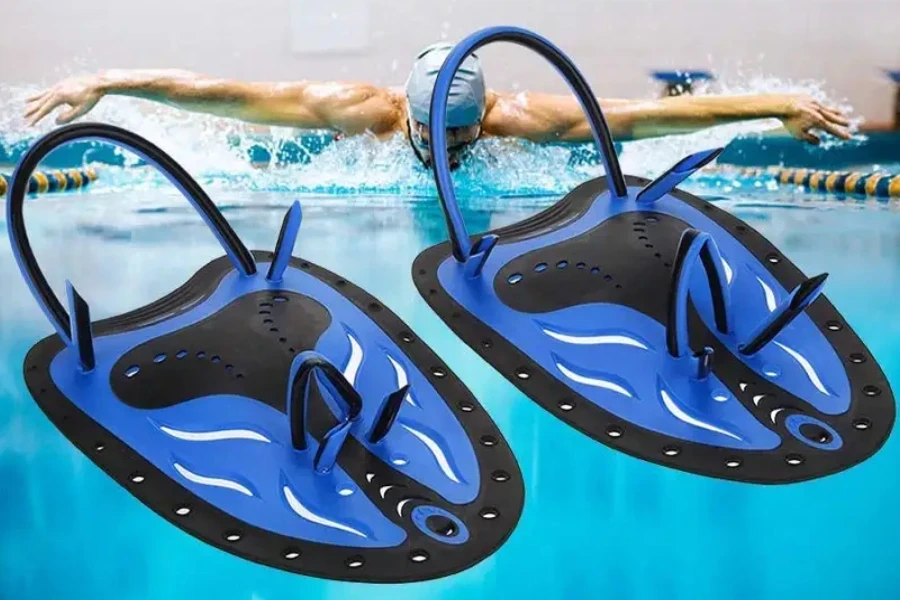
By incorporating hand paddles into their training routine, swimmers can enhance their stroke technique, improve their endurance, and develop stronger muscles in their upper body. Hand paddles come in various shapes and sizes, each designed for specific training goals.
For those looking to improve their stroke technique, smaller and more streamlined paddles are ideal. These paddles provide moderate resistance, allowing swimmers to refine their swimming technique and maintain proper form.
On the other hand, swimmers looking to build strength and power are recommended to use larger hand paddles with increased surface area. These paddles create more resistance, forcing the muscles to work harder and generate greater power in each stroke.
Kickboards
Kickboards and training kickboards target the lower body, isolating, strengthening, and improving a swimmer’s kicking technique via their quadriceps, hamstrings, and calves.
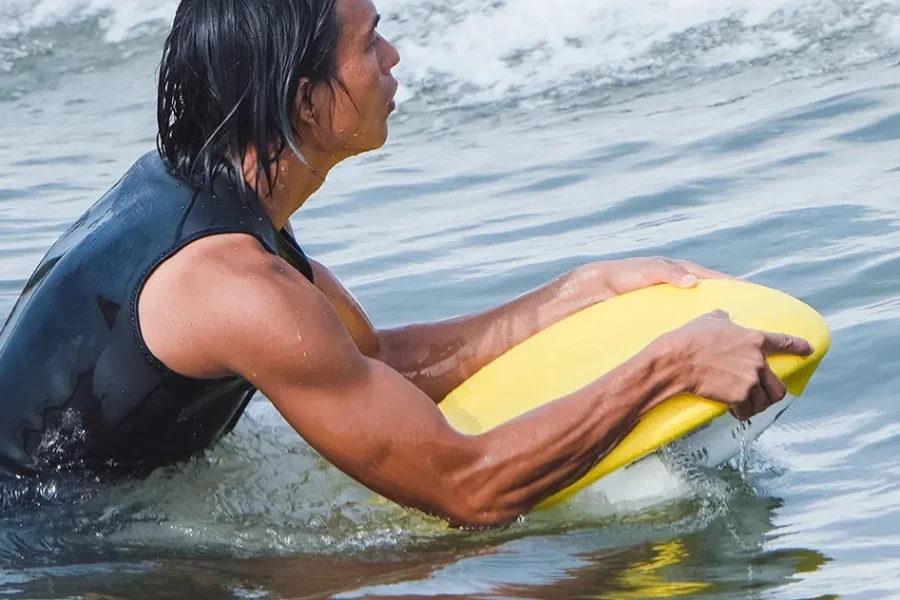
Kickboards come in different types and sizes, catering to various skill levels and training goals. For beginners or those focusing on improving their leg strength, larger kickboards with more buoyancy are recommended. These kickboards provide added stability and support, allowing swimmers to focus on their leg movements without the fear of sinking.
Intermediate and advanced swimmers, on the other hand, may prefer smaller kickboards that offer less buoyancy. These smaller kickboards challenge the swimmer’s balance and core stability, encouraging them to engage their core muscles more effectively.
Google Ads data illustrates a noticeable surge in the global search volume for “kickboards,” amassing an impressive 40,500 searches. The data further shows an intriguing growth pattern in the United States market: In April 2023, kickboards were searched 1,600 times but leaped to 2,400 by September 2023, representing a notable increase of 50%.
Pull buoys
Pull buoys isolate the upper body and help to improve stroke technique. When placed between the legs, pull buoys eliminate the need to kick, allowing swimmers to focus solely on their arm movements and upper body strength.
This isolation of the upper body helps swimmers develop better stroke technique by enabling them to concentrate on arm positioning, catch, and pull through. To ensure maximum benefit, it is important that swimmers place and use a pull buoy correctly during swim sessions.
Swimmers should position the pull buoy between their thighs, squeezing it with their legs to keep it in place throughout their swim. This placement immobilizes their legs, forcing them to rely solely on their upper body for propulsion and maintain a streamlined body position to engage their core muscles.
According to Google Ads data, the search volume for “pull buoys” saw a rise of 880 to 1,000 between May and July 2023, demonstrating a noteworthy increase of approximately 14%.
Snorkels
Snorkels can greatly improve body alignment and a neutral head position in the water, allowing for better alignment of the spine while swimming.
This improved body alignment contributes to reduced drag in the water, enabling swimmers to move more smoothly and efficiently. Additionally, snorkeling gear helps swimmers focus on their stroke technique without the need to turn their heads to breathe, resulting in improved stroke mechanics and rhythm.
There are two main types of snorkels available: front-mounted and side-mounted snorkels. Front-mounted snorkels attach directly to the swimmer’s forehead, positioning the mouthpiece in front of the face. This design allows for a more streamlined and hydrodynamic position, reducing drag and providing a clear line of sight. Side-mounted snorkels, on the other hand, are attached to the side of the swimmer’s head, allowing for a more natural breathing motion.
Snorkels enjoy a global average monthly search volume of 74,000, according to Google Ads, demonstrating their widespread popularity and utility.
Resistance bands and parachutes
Adding resistance to swim training can significantly enhance a swimmer’s performance in the water. Resistance bands work by attaching to the swimmer and simulating the resistance they encounter in the water, helping to build strength and endurance.
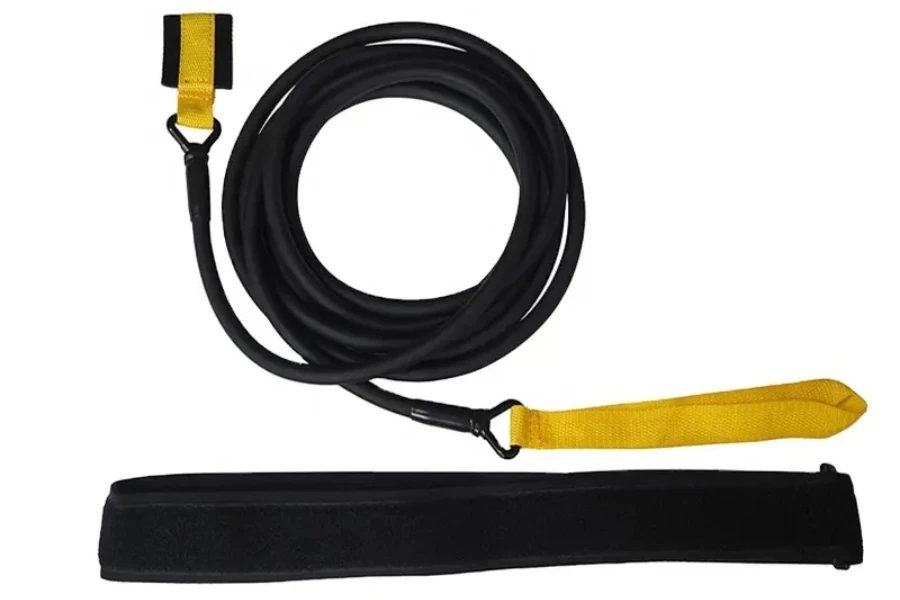
Parachutes, on the other hand, offer a unique form of resistance training for swimmers. These devices consist of a large canopy that creates drag as the swimmer moves through the water. Parachutes are commonly used in open-water swimming or during pool sessions to increase resistance and force swimmers to work harder.
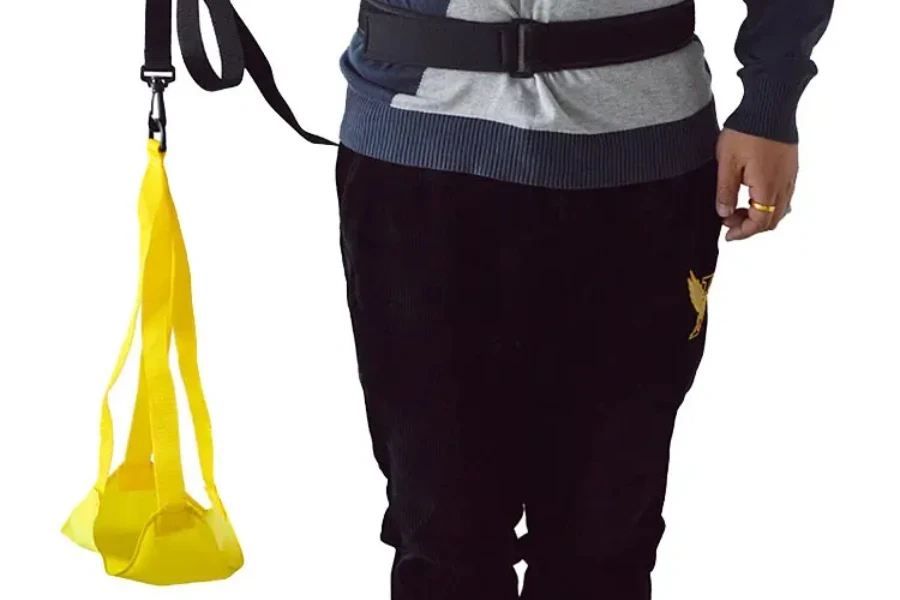
With a substantial global average monthly search volume of 301,000 on Google Ads, it’s evident that these training approaches garner significant interest.
Drag suits
Wearing a drag suit during swim training is an effective way to increase resistance and build strength. These suits are designed to create drag in the water, pushing swimmers to work harder and develop more power in their strokes. Drag suits can also help to improve stroke technique by encouraging a more streamlined body position and stronger pull through the water.
By increasing resistance, swimmers can target specific muscle groups and improve overall strength and power. These baggy suits can help to vary workouts and keep training interesting by adding a new challenge to regular swim routines. Additionally, drag suits are often used in competitive swimming to prepare for swim meets and improve race performance.

Different styles of drag suits offer varying levels of resistance, with some designs featuring mesh panels for greater breathability, while others are made using heavier fabrics for more resistance. When selecting a drag suit, it is important to choose a size that fits properly to ensure maximum effectiveness.
Tempo trainers
Tempo trainers help swimmers improve their stroke rate and pacing. These small devices emit audible beeps to help swimmers establish and maintain a consistent rhythm in the water. By setting a desired tempo on the trainer, swimmers can focus on their stroke timing and work towards achieving efficient and effective strokes.
Incorporating tempo trainer drills into swimming workouts is a great way to enhance performance. One popular drill is the “overkick drill,” where swimmers increase their kick rate to match the tempo trainer beeps, focusing on maintaining a fast kick alongside proper body position and stroke technique.
Swim lap counters
Keeping track of laps and distances is important for maintaining discipline in training and monitoring progress. Swim lap counters provide a convenient way to stay organized, helping swimmers focus on their goals instead of keeping a mental count of laps. They are an essential tool for swimmers who want to accurately track their laps and distance swum during training sessions.
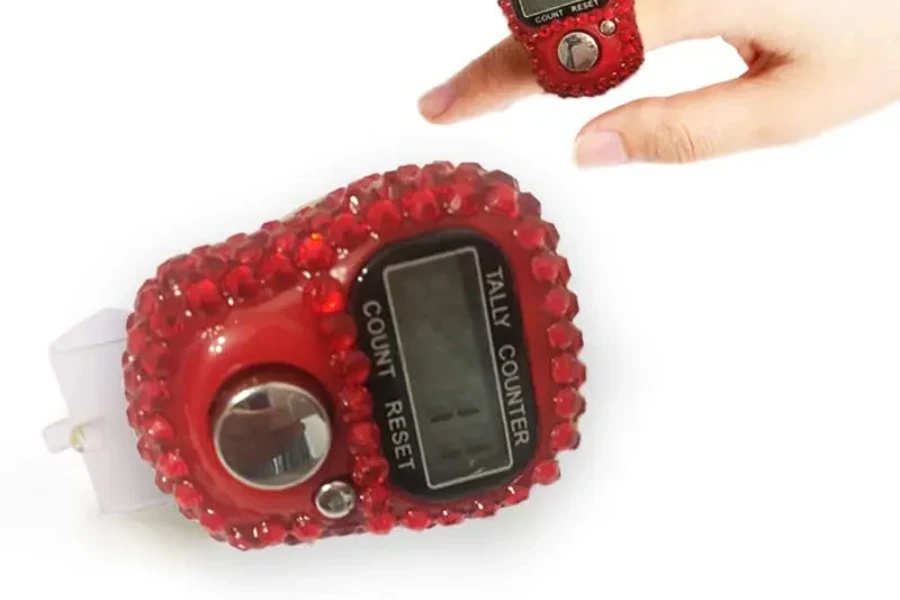
There are two types of lap counters available: manual and digital. Manual lap counters are typically small mechanical devices that the swimmer wears on their fingers, pressing a button to keep the lap count.
Digital lap counters, on the other hand, offer a more advanced and automated solution. These lap counters often come as wristwatches or devices that can be placed on the pool deck. They track laps and distances automatically, displaying the information on a digital screen. Digital lap counters may also come with additional features like timers, stroke count, and pace calculation.
Incorporating a lap counter into swim training allows swimmers to set and break down goals based on lap counts or total distance. Lap counters also help swimmers maintain motivation by providing visual feedback on progress. With accurate lap and distance tracking, swimmers can analyze performance and identify areas for improvement.
Conclusion
From swim goggles that enhance underwater visibility to resistance bands that build strength and power, these tools are essential for improving technique and overall performance in the water. With a thorough understanding of these swimming training aids, businesses can build a swimming equipment inventory that is finely tuned to the ever-evolving demands of swimming enthusiasts, whether they are professional athletes or beginners.
To explore a wide range of swimming training equipment options, visit the Alibaba.com showroom.
